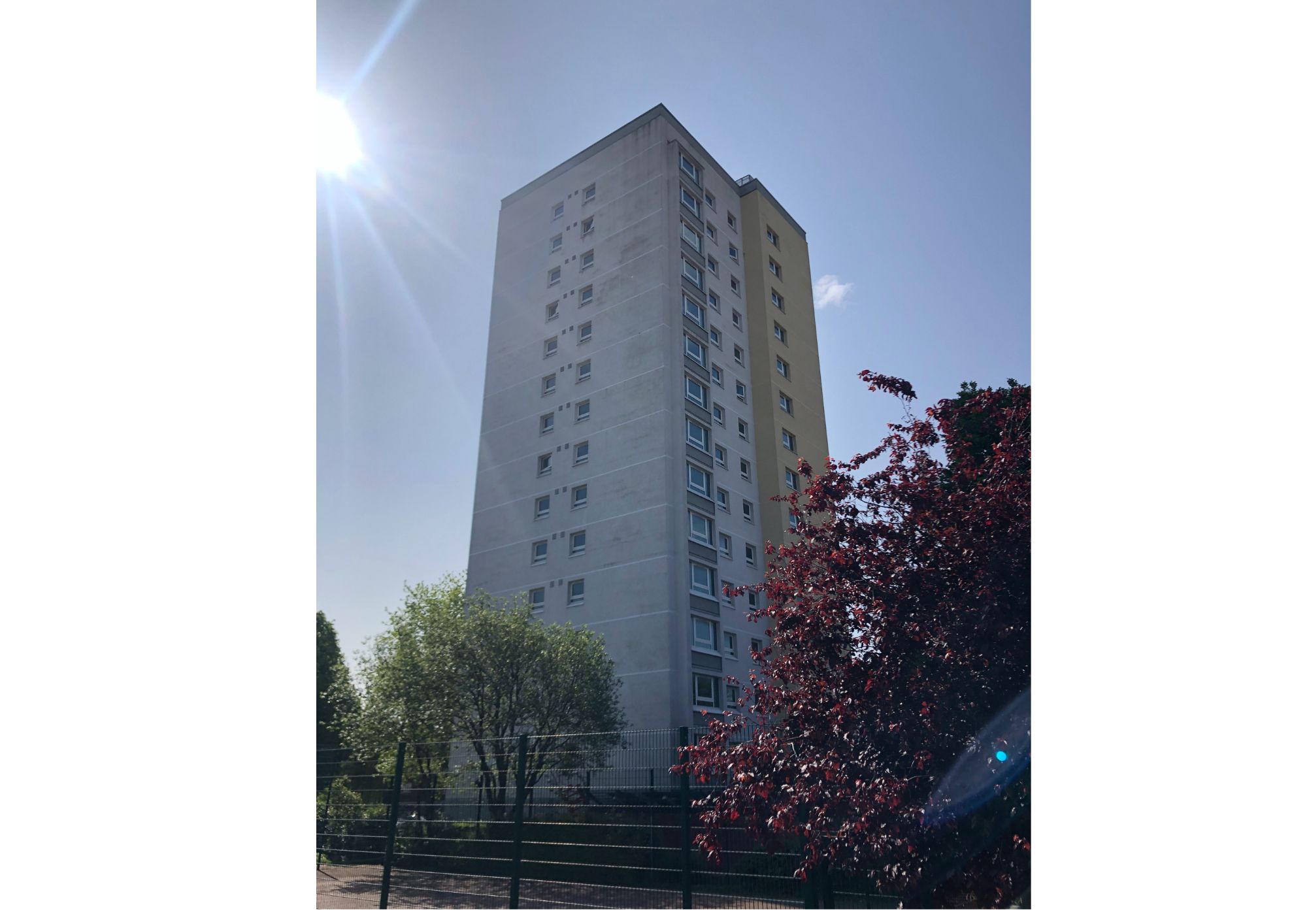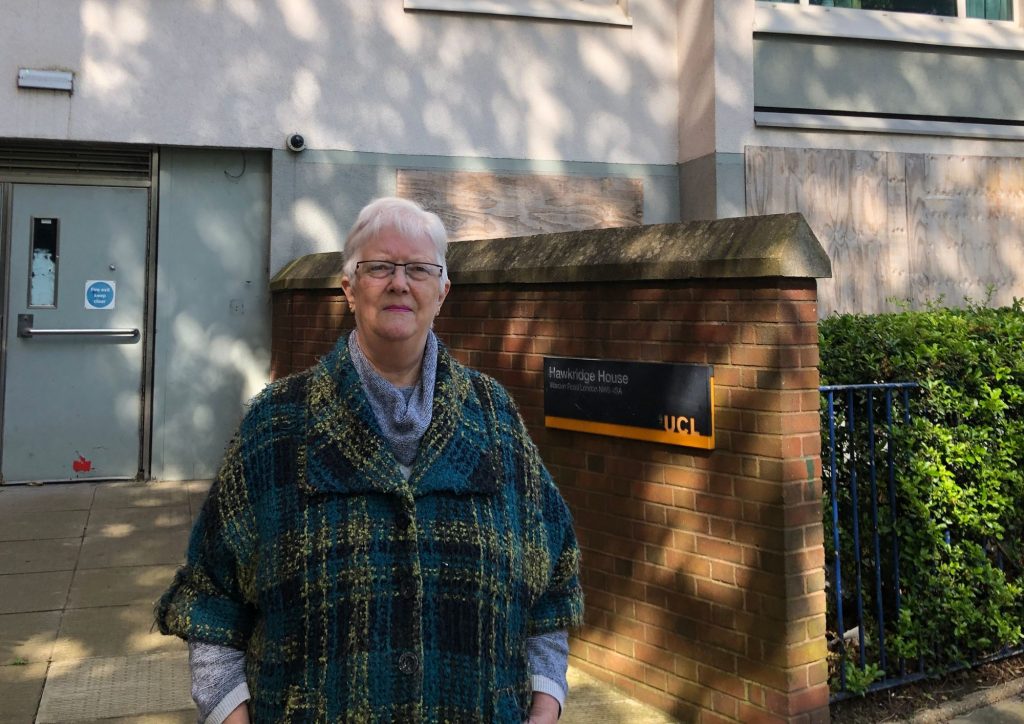How has tower been allowed to stand empty for THREE years amid housing crisis?
Exclusive: Two hundred people could be living in boarded up student block
Friday, 19th May 2023 — By Frankie Lister-Fell

14-floor Hawkridge House stands empty – while people desperately wait for homes
FOLLOW US ON FACEBOOK. CLICK BANNER.
RESIDENTS are calling for an abandoned student halls – which could house over 200 people – to be put back into use after it has stood empty for three years in the middle of London’s housing crisis.
Hawkridge House is a 14-floor tower block in Kentish Town for postgraduate international students at University College London (UCL).
Tenants were rushed out of the building in 2020. Its ground floor is boarded up, the front door’s window is smashed, and bedroom windows on the upper floors remain open.
With approximately 570 homeless households in Camden’s temporary accommodation, incorporating Hawkridge House, which was previously owned by the council in the 1980s, into Camden’s housing stock should be a priority, it was argued this week. Meanwhile, the Town Hall is pressing ahead with plans to demolish the West Kentish Town Estate next door (WKTE).
Jill Fraser, a former Liberal Democrat councillor, has lived opposite Hawkridge House for the past 35 years.
She told the New Journal: “This building should not be left empty, we could house so many needy people. Instead they’re pulling down the WKTE and building 885 homes. To convert that block of flats into homes no matter what it costs has got to be better than leaving it standing there and rotting.
“It needs to be brought back into use. Derelict places do nothing for the area.”
She added: “Just leaving it empty and paying rates and god knows what on it… It’s wicked that people can get away with leaving properties empty.”

Former Camden mayor Jill Fraser outside the block
WKTE resident Andrew Dow said: “At present, Camden is proposing to put up another tower block just to the north of Hawkridge as part of the ‘new WKTE’. Hawkridge lies deserted and boarded up. A sensible solution – more cost effective, less disruptive, faster to deliver, and making best use of existing materials – would be for Camden to either negotiate with the current landlords of Hawkridge, or make a compulsory purchase order, and then retrofit Hawkridge to modern accommodation specifications for new social housing.”
In February 2020, UCL told Hawkridge House tenants that they needed to leave and relocate in less than a month.
An online petition signed by 344 people demanded answers from UCL.
It said: “This move will take place mid-week, mid-term. This leaves very little time to pack up our belongings, attempt to find new private accommodation, and imposes a serious mental, physical, and economic burden on students.
“If Hawkridge Hall is unliveable or is in any way dangerous, we have a right to know about this. Furthermore, we should be compensated financially for living in a building that is a threat to our health.”
The New Journal sent a Freedom of Information request to UCL about the incident. The university said that the move was due to “scheduled refurbishments” to “improve the building”, including painting bedrooms and replacing furniture, which led UCL to permanently close the building. UCL said there are “plans to sell” Hawkridge.
It maintained that “fire safety improvements were not part of these enhancements”.
But the university’s 2018 fire risk assessment (FRA) of the building states that there were a “number of issues” with the rendered expanded polystyrene (EPS) cladding system.
It said: “UCL will in due course remove the EPS system and replace it with a modern, compliant cladding system.”
The same statement is replicated in the 2019 risk assessment – the last to be completed before Hawkridge was closed. Both FRAs also state that “receptacles” to extinguish cigarettes were provided on the cladding and “there is evidence that students have been extinguishing cigarettes on the combustible material”.
While EPS is legal, fire safety experts have advised that it is not suitable for high-rises. In 2018, following the Grenfell Tower disaster, some London councils – including Islington, Hackney and Tower Hamlets – announced it would strip EPS from its tower blocks. Chartered building surveyor
Arnold Tarling said: “[EPS] burns rapidly and allows fire to spread across the face of a building and it bypasses all the fire stopping. It’s like solid petrol all over the building. It’s a plastic which burns and plastics are basically petroleum-based.”
He added that after a fire at Shepherd’s Court in Shepherd’s Bush in 2016, “the London fire brigade gave a warning to all the local authorities about expanded polystyrene cladding on buildings, particularly high-rise. This warning goes to local authorities but it doesn’t go to UCL or housing associations. The whole system is broken.”
A UCL spokesperson said: “As part of our continuous fire risk assessments across UCL, some expanded polystyrene (EPS) was revealed behind the cladding at Hawkridge House. “Despite the building having robust fire safety measures in place, and having passed all relevant inspections at the time, we decided to relocate students to alternative UCL accommodation.
“While we did our best to minimise disruption, the health and safety of students and staff at UCL is always our number one priority, and thank all those affected for their co-operation at the time.”
Camden Council said it has had an initial meeting with UCL to buy the building, but a decision has not been made as building safety surveys need to be conducted first.

